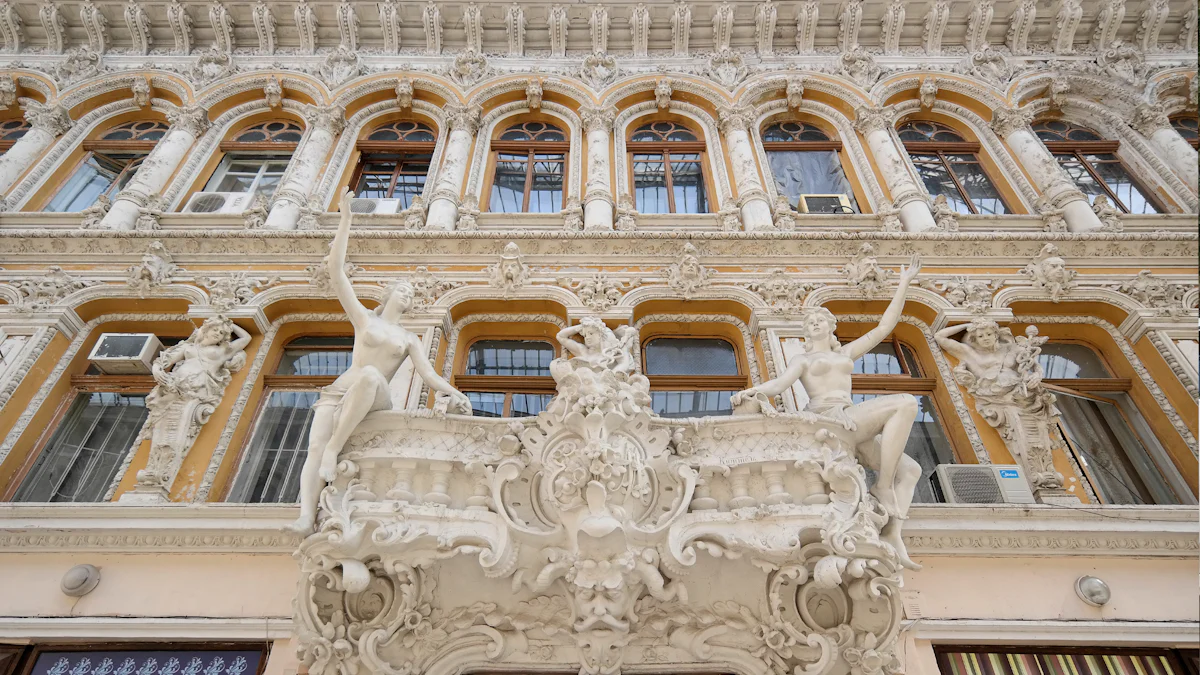Design: The Definitive Visual Guide

Design plays a pivotal role in shaping our everyday lives. From the chairs we sit on at work to the crockery we use on our dining tables, design significantly impacts our daily experiences. Companies that invest in high-quality design often see an increase in market share and customer loyalty. A consistent brand presentation can boost revenue by up to 33%. Historically, design movements have profoundly influenced contemporary art. Understanding the history of design empowers designers to create meaningful and effective works. While the human capacity to design remains constant, its manifestations evolve over time. This historical significance underscores the role of design within cultural contexts.
Arts and Crafts Movement
Historical Context
The Arts and Crafts Movement emerged in Britain during the 1860s and 1870s. This movement responded to the damaging effects of machine-dominated production. Designers sought to improve standards of decorative design. The movement flourished in large cities throughout the UK in the late 19th and early 20th centuries.
Timeline of the Movement
1860s-1870s: Birth of the movement in Britain.
1890s-1900s: Expansion into major UK cities.
1950s-1960s: Bernard Leach revitalized the philosophy among British craft workers.
Key Designers and Manufacturers
Key figures included William Morris and John Ruskin. These designers emphasized craftsmanship and quality. Their work inspired a generation of artisans and manufacturers.
Philosophy and Visual Style
The Arts and Crafts Movement celebrated the visibility of the artist's hand. Designers believed in creating environments with beautiful workmanship. Objects were designed for a 'total' interior, blending various disciplines harmoniously.
Influences on Subsequent Trends
The movement influenced modern design by promoting craftsmanship. It encouraged the integration of art into everyday life. The focus on quality and detail impacted future design philosophies.
Iconic Objects and Their Impact
Iconic objects from this era include handcrafted furniture and textiles. These items showcased the beauty of natural materials. Their impact remains evident in contemporary design practices.
Art Nouveau

Historical Context
Art Nouveau emerged in the late 19th century. This movement sought to break away from historical styles. Designers embraced organic forms and intricate details. The movement flourished across Europe and North America.
Timeline of the Movement
1890s: Art Nouveau began in Belgium and France.
1900s: The style spread throughout Europe.
1910s: Art Nouveau reached its peak and began to decline.
Key Designers and Manufacturers
Key figures included Hector Guimard and Antoni Gaudí. These designers created iconic structures and artworks. Their work often featured abstract symbolism and new visual canons. The designs integrated art with architecture, creating cohesive environments.
Philosophy and Visual Style
Art Nouveau celebrated natural forms and flowing lines. Designers used motifs inspired by plants and animals. The style emphasized harmony between design and nature. Art Nouveau aimed to create beauty in everyday objects.
Influences on Subsequent Trends
Art Nouveau influenced modern design by promoting artistic integration. The movement encouraged the use of new materials and techniques. Designers explored innovative approaches to form and function. The emphasis on aesthetics impacted future design philosophies.
Iconic Objects and Their Impact
Iconic objects from this era include stained glass and decorative ironwork. These items showcased the beauty of craftsmanship. The impact of Art Nouveau remains evident in contemporary design practices. Designers continue to draw inspiration from its organic forms and intricate details.
Art Deco

Historical Context
Art Deco emerged in the early 20th century. The movement began in France around 1925. Designers celebrated modernity and luxury. The style spread globally during the 1930s. The Great Depression impacted the construction of grand Art Deco skyscrapers.
Timeline of the Movement
1925: Art Deco debuted at the Exposition Internationale des Arts Décoratifs et Industriels Modernes in Paris.
1930s: The style gained popularity worldwide.
1940s: Art Deco began to decline as new styles emerged.
Key Designers and Manufacturers
Émile-Jacques Ruhlmann and René Lalique were prominent figures. These designers created luxurious furniture and glassware. Their work embodied the essence of Art Deco. The Chrysler Building in New York became a monumental embodiment of the style.
Philosophy and Visual Style
Art Deco embraced geometric shapes and bold colors. Designers used materials like chrome and glass. The style reflected themes of progress and innovation. Art Deco artists approached modernity with elegance.
Influences on Subsequent Trends
Art Deco influenced modern design through its emphasis on luxury. The movement inspired future architectural styles. Designers continued to explore geometric forms and opulent materials.
Iconic Objects and Their Impact
Iconic objects included streamlined furniture and decorative items. The impact of Art Deco remains visible in contemporary design. Designers draw inspiration from its characteristic style and themes.
Mid-Century Modern
Historical Context
Mid-century modern design emerged in the mid-20th century. The movement gained popularity from the 1940s to the 1960s. This era followed World War II and reflected optimism and innovation.
Timeline of the Movement
1940s: The movement began in the United States.
1950s: Mid-century modern design reached its peak.
1960s: The style continued to evolve and influence contemporary design.
Key Designers and Manufacturers
Key designers included Charles and Ray Eames, Eero Saarinen, and George Nelson. These designers focused on creating functional and stylish furniture. Manufacturers like Herman Miller and Knoll produced iconic pieces. These companies became synonymous with mid-century modern design.
Philosophy and Visual Style
Mid-century modern design emphasized simplicity and functionality. Designers used clean lines and organic forms. The style incorporated new materials like plastic and plywood. Mid-century modern architecture allowed for decorative accents and a retro feel.
Influences on Subsequent Trends
Mid-century modern design influenced contemporary styles. The focus on efficiency and simplicity impacted future design philosophies. Designers continue to draw inspiration from mid-century aesthetics.
Iconic Objects and Their Impact
Iconic objects included the Eames Lounge Chair and the Tulip Table. These items showcased the beauty of form and function. The impact of mid-century modern design remains visible today. Designers celebrate the timeless appeal of this style.
Contemporary Design
Historical Context
Contemporary design emerged in the late 20th century. The movement reflects the rapid technological advancements of the era. Designers embraced new materials and innovative techniques. The style continues to evolve with cultural and technological shifts.
Timeline of the Movement
1980s: The movement began to take shape.
1990s: Designers experimented with digital tools.
2000s: The style gained global recognition.
Key Designers and Manufacturers
Philippe Starck and Zaha Hadid are prominent figures in contemporary design. These designers pushed the boundaries of form and function. Companies like IKEA and Apple became synonymous with contemporary aesthetics. Their products embody the principles of modern design.
Philosophy and Visual Style
Contemporary design emphasizes minimalism and functionality. Designers focus on clean lines and open spaces. The style often incorporates sustainable and eco-friendly materials. Technology plays a crucial role in shaping contemporary aesthetics.
Influences on Subsequent Trends
Contemporary design influences modern architecture and interior design. The movement encourages the use of smart technology in homes. Designers explore sustainable solutions for everyday objects. The focus on innovation impacts future design philosophies.
Iconic Objects and Their Impact
Iconic objects include sleek furniture and cutting-edge gadgets. The impact of contemporary design remains visible in urban environments. Designers celebrate the fusion of art and technology. The style continues to inspire new generations of creators.
Design has evolved through various movements, each contributing unique styles and philosophies. This evolution highlights the ongoing relevance of design in shaping cultural and technological landscapes. Designers draw inspiration from history to create meaningful works. Design principles guide the creation of effective and impactful designs. The phrase "Design is Thinking Made Visual" encapsulates the essence of this creative process. This approach transforms abstract ideas into tangible forms. Understanding design's history and principles empowers designers to innovate and inspire future generations.
See Also
The Ultimate Illustrated Art Compendium
The Complete Visual Story of Britain and Ireland
Armored Vehicles: The Ultimate Visual Historical Account

